Robert John Drewell
Sapper 134792 Robert John Drewell, 97th Company, Royal Engineers
Robert was born on 19 January 1895 in Harlesden in north west London; he was the eldest child of Robert John Drewell and his wife Margaret Jane née Burnett. He had two siblings, one of whom died in infancy; the survivor was William Burnett Drewell, ten years Robert’s junior and, fortunately, too young to serve in the Great War.
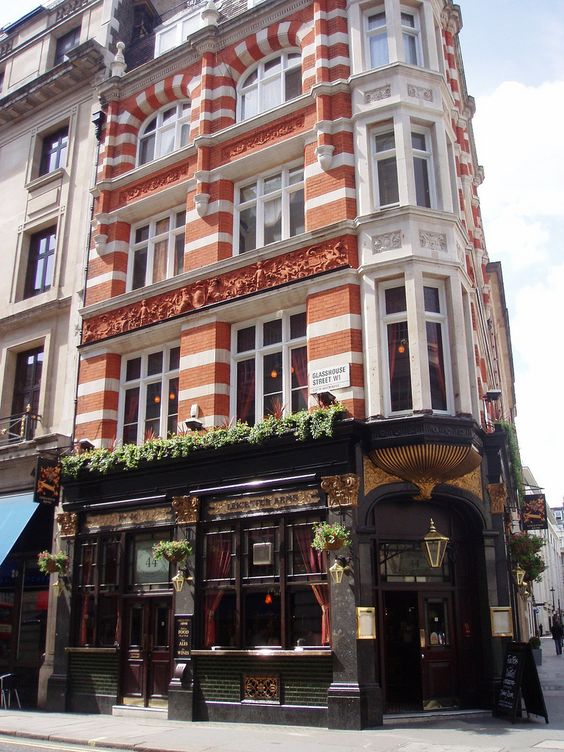
The rather splendid Leicester Arms in London, where Robert's mother was cook. |
It is not clear when they moved to Newbury, mainly because they seem to have lived initially in accommodation above a shop (Bendy’s Stores in Bartholomew Street) and hence avoided being recorded in the local street directories. However, it is clear that they were resident in the town before 28 February 1905 when young Robert transferred from a private school to St Nicolas’ National School in Enborne Road. At this time schooling was compulsory up to the age of 12, though it seems to have been the norm in Newbury to stay on at St Nic’s for an extra year – this would be at the discretion of the parents. Robert did stay on and left school on 31 July 1908 and, before long, became a carpenter’s apprentice.
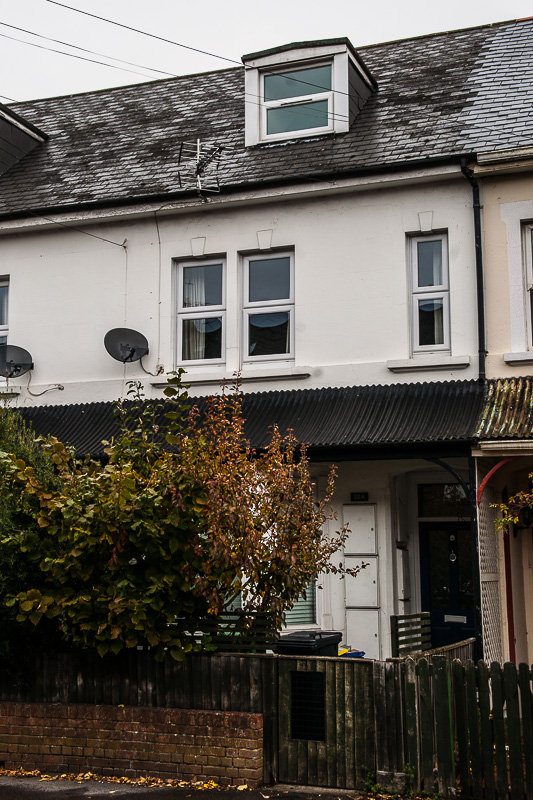
22 Craven Road - when the Drewells lived here it was 9 Craven Street. |
Newbury parish magazine, December 1915 (D/P89/28A/13)
Lord Derby’s recruiting scheme has resulted in a number of young men enlisting from Newbury, and doubtless there are others who will go. Among those who have been accepted are Mr G P Hopson, Mr A Hill, Mr L Cramp, and Mr R J Drewell, four of our servers, and Mr Winkworth, a member of the Men’s Bible Class. Mr G L Pyke has been rejected on account of his eyes, his brother, Mr Cecil Pyke, one of our Sunday School teachers, has been accepted for service at home, and Mr R Bell has been rejected. All honour to those who have tried as well as to those who have been accepted, for they have shown their willingness to serve their country in her need.
At this time church going was far more prevalent than today, large congregations would attend services at St Nicolas’ Church in the centre of the town; it would take a large congregation a long time to take communion if the priest and sacristan were working alone – servers would assist, helping the efficient supply of communion wafers and wine, counting celebrants and, in high church services acting as thurifers (waving incense burners). Two of the four servers volunteering (Leonard Cramp and Robert) would lose their lives in the war; another, Geoffrey Paul Hopson (known as Paul), would survive to marry Norah Camp leading to the merger or their family businesses to create Camp Hopson.
In reality Robert did not enlist under the Derby Scheme (sign up now, serve later) but enlisted there and then beginning his service in November 1915. As a carpenter by trade it is no surprise that he was sent to the Royal Engineers – engineering might conjure up images of finely machined metal built into complex mechanisms, but the bulk of the Royal Engineers’ work in the war was far more attuned to that of a building site carpenter.
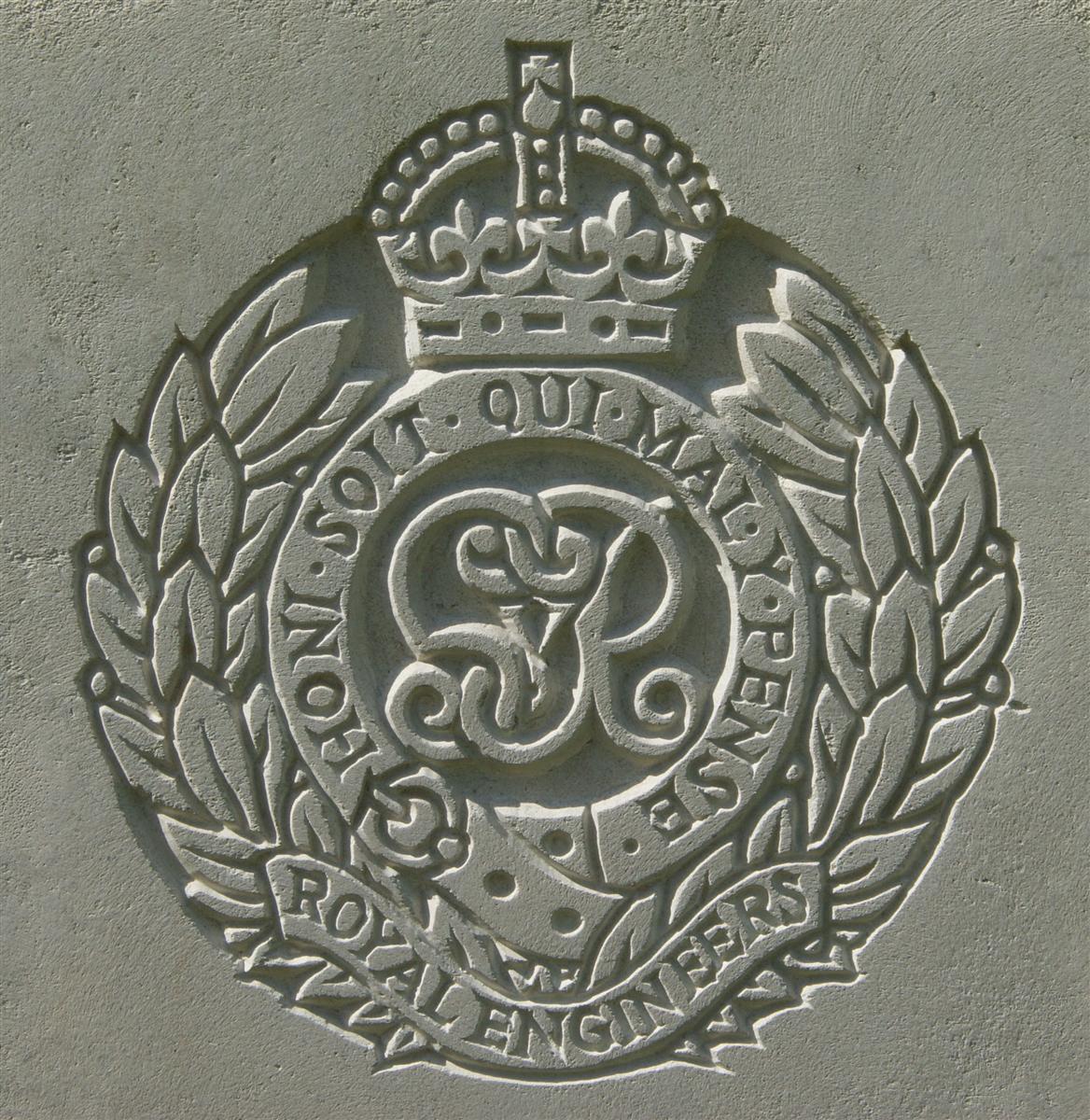
The badge of the Royal Engineers, as used on a CWGC headstone. |
As well as a skilled workforce (unskilled help would come from the infantry, especially pioneer battalions) the Royal Engineers were also soldiers, trained in musketry and infantry tactics. This became very evident in the spring of 1918 when a series of massive German offensives smashed the Allied defences in several places.
The first of these offensives Operation Michael hit the British 3rd and 4th Armies on 21 March in the area that was fought over during the Battle of the Somme in 1916. The 4th Army was smashed back, retreating up to 30 miles over the ensuing days. Desperate defensive actions took place all along the line, everyman was pushed into the line to plug the gaps – the Royal Engineer companies were no exception.
The 97th Company had been carrying out works near Liéramont and had a number of infantry men attached as working parties to carry out the unskilled labour – when the Germans arrived they were all infantry and came under the command of the CO of the 6th Battalion, Leicestershire Regiment, which was pushed into the line alongside them. On the second day of the offensive the German advance reached them:
War Diary, 97th Company, Royal Engineers – 22 March 1918
The position which the Coy was holding near 6th Leicesters was heavily shelled at 7am the bombardment lasting for an hour and a half & the men were ordered to leave the trench and take up a position in shell holes in front of the trench. Lieut R H Callyns was wounded when leaving the trench.
About 11am the position was being surrounded by the enemy and the CO 6th Leicesters ordered the garrison to fall back. The withdrawal was carried out under MG fire and most of the Coy were seen being surrounded and cut off by the enemy, only Lieut Callyns 1 Sergeant & 6 OR being able to get clear.
Durinig the morning the horses of 126th Field Coy RE were moved to the HQ of this Coy at LIERAMONT.
Orders were received from CRE for all attached Infantry to report at 62nd Bde HQ HEUDECOURT. The party under 2/Lieut Kingston 2nd Lincolns moved off at 1.30pm.
LIERAMONT and vicinity of Coy HQ being shelled by the enemy the Transport moved off through AIZECOURT-le-BAS. While the Transport was moving the road was shelled and wagons of other Unit were hit. 12 EA flying low attacked the column with MG fire and every available man of the Coy was ordered to open rifle fire on them & succeeded in driving them off. Transport of the Coy arrived at HAUT ALLAINES 11.45pm & camped. Orders were received here for Transport to move with 62nd IB. Survives of the Coy & attached infantry rejoined HQ.
Robert died that day, it is not known how or where, just that his remains were never identified so he has no known grave (many whose remains were unidentifiable were buried anonymously under stones marked A Soldier of the Great War – Known unto God). His name is remembered on the Pozieres Memorial to the missing, a few miles west of where his unit was engaged that day.
Newbury Weekly News, 13 June 1918 – Local War Notes
Sapper R J Drewell, Royal Engineers, was killed in action in France on March 23rd. He was 23 years of age, and son of Mr and Mrs Drewell, late of Craven-street, and now living at Horley, Surrey. He was apprenticed at Messrs Hoskings Bros, West Mills and was a member of the St Nicolas CLB. The major of his Company writes:- “I am sorry to say your son was killed holding a rearguard position, being shot through the head. He had behaved splendidly, having to stop behind with the kit with another sapper, but had to leave. He was then with the Infantry rearguard and fought with them until the RE relieved them. He will be missed by everyone.”
The explanation of the quick death from a bullet in the head was a common feature of these letters – it is quite possible that the major had no idea how Robert had died but wanted to ease the pain felt by his family.
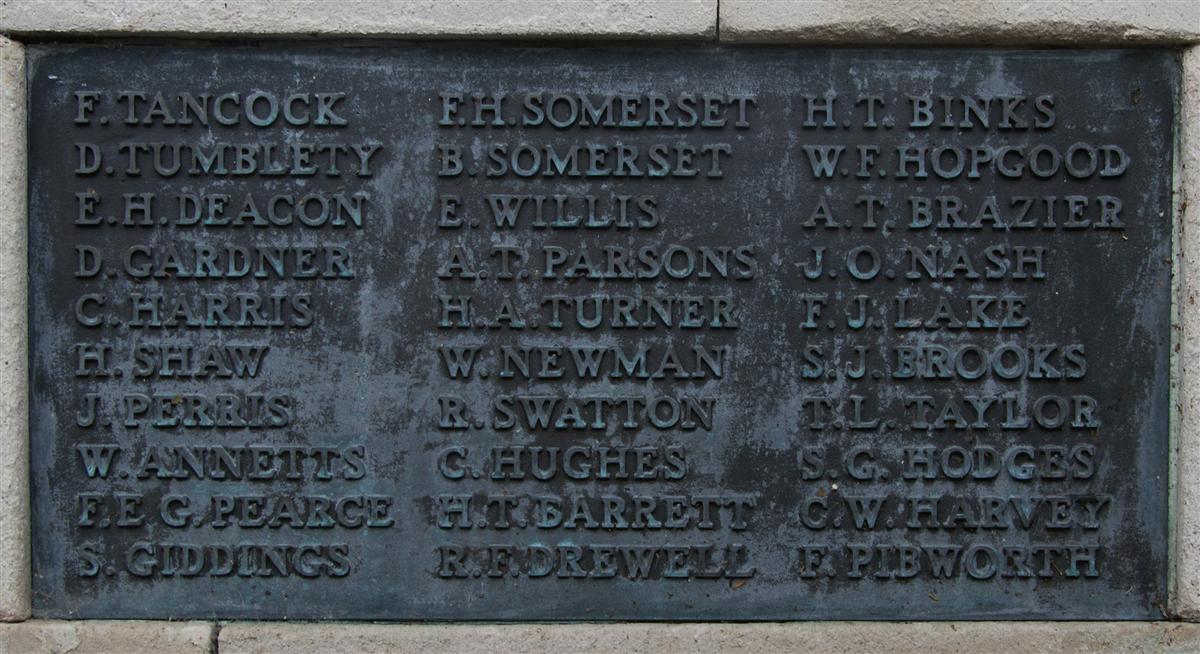 Name on Newbury War Memorial (upper right) |
Locally he is remembered on Tablet 13 of the Newbury Town War Memorial as R F Drewell and in the same manner on the parish memorial board and roll of honour in St Nicolas’ Church. His name probably found its way on to the town memorial via the parish roll of honour; had it not done so it may well have been omitted as his parents had left the town and had few local connections. This could also be the explanation for the incorrect second initial – there was no one to correct it; if only they had consulted the parish magazine item above.
His family moved to Horley in Surrey during the war and had settled in to the new community by 1920, when they placed the following notice in the local paper:
The Surrey Mirror, 26 March 1920 – In Memoriam
DREWELL. – In Loving Memory of Sapper Robert John Drewell (“Bob”), RE, who fell in action at Clery, France, March 23rd 1918. “Gone but not forgotten.” – From Father, Mother, Brother, and Grannie.
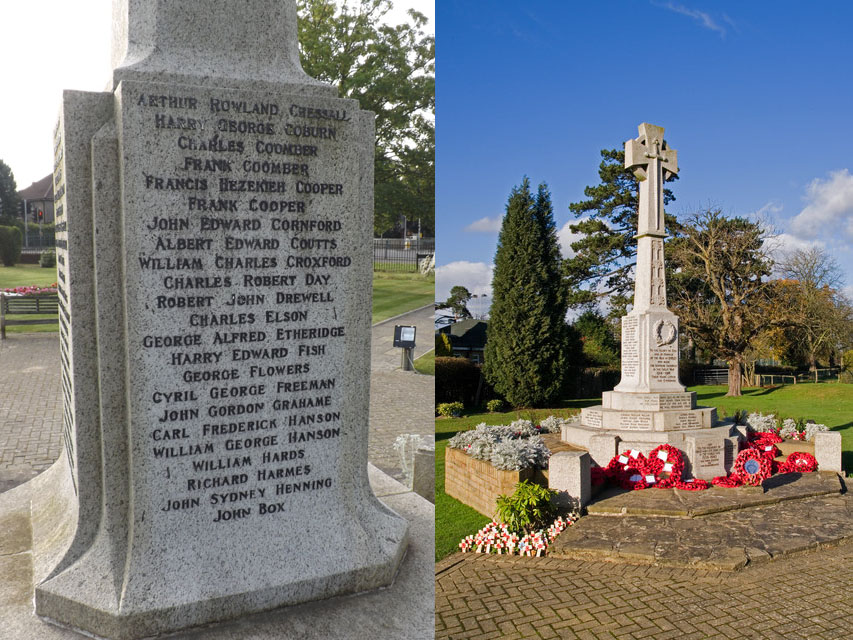
Horley War Memorial (c) David Larkin/Ian Capper, War Memorials Online |
His young brother, William, became an engineer working for Creed & Co Ltd, manufacturers of typewriters and early electronic keyboards like teleprinters and teletypes. Testing such items to see how well they lasted under repeated use was a problem – so many keys to press, so many times. The obvious solution was to automate the testing – William took out a patent in 1945 for an electomechanical device that would press each and every key thousands of times - a patent that stood the test of time and was still being referred to in other patent applications almost 40 years later. During WW2 Creed & Co was involved in the development of cipher machines – which probably meant that William was protected from conscription in the services.

